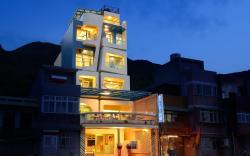Ruifang Railway Station Introduction
In May 1919, the railway segment from Badudu to Ruifang was opened, officially establishing Ruifang as a train station. The station currently serves as an important transfer hub for access to the Golden Mountain City (including Shui Nan Dong, Jinguashi, and Jiufen), coastal fishing villages (Ruibin, Nanya, and Bitou Cape), and the Pingxi Line of the Black Gold Railway. After 2013, the long-awaited Shen'ao branch will resume service at the third platform, transforming from a mining station back to a tourist station. Ruifang Railway Station consistently ranks among the top thirty in Taiwan Railways, primarily revitalized through cultural and tourism developments. In front of the station, there is a "Station Square" where various performances may take place during relevant festivals (such as Dragon Boat Festival and Mid-Autumn Festival). Next to the square, there's a "Taxi Stand" for visitor convenience. Walking 50 to 100 meters forward from the front of the station, you will find the "Ruifang Gourmet Street," located at No. 2, Lane 35, Minsheng Street, Ruifang District, featuring numerous delicacies such as the famous Longfeng Legs and Lin's Fuzhou Pepper Cakes. Be sure to stop by and taste them. Additionally, the rear station area leads to the ruins of Ruifang Shrine and Ruifang Old Street, where you can see famous historic houses, including the Liao Residence (Liao Jianfang Business) from the Qing Dynasty, and the Japanese branch of Lin’s Dental Clinic, as well as Yifang Business. Walking along Yuewang Road through the Ruibin Ancient Trail will take you to Lujiliao Mountain and Xiuxi Mountain, which is perfect for hiking enthusiasts. Don't miss out on the sweet potato balls at the rear station for food lovers!

































